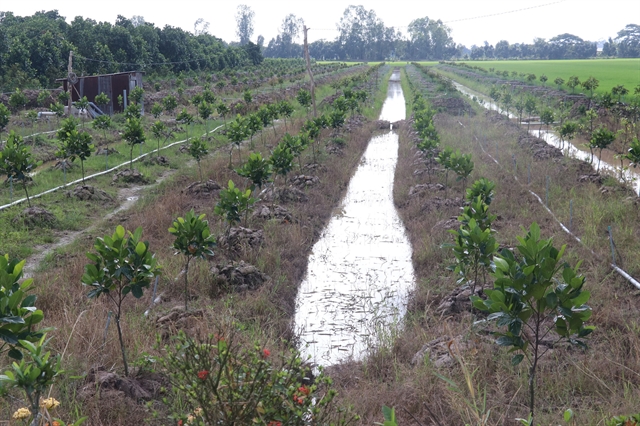 Opinion
Opinion

The abundant young labour force is one of Việt Nam’s great advantages, as young people can adapt quickly to new science and technology. However, amid the fourth industrial revolution, with the rapid application of new developments in information technology, automation and the internet of things, the country is challenged by the lack of quality among its labour resources. Deputy Minister of Labour, Invalids and Social Affairs Lê Quân talks to the Viet Nam News Agency about how to improve the situation.
 |
| Lê Quân. — Photo nld.vn |
The abundant young labour force is one of Việt
The 4th Industrial Revolution (Revolution 4.0) is developing around the world and directly affects Việt
The fourth industrial revolution is progressing rapidly and affecting many aspects of economic and social aspects. With the rapid development of science and technology, more and more robots and automation systems have emerged and been widely used in information technology, digital data and artificial intelligence.
It must be said that this is a very good opportunity that we have to grasp in order to develop new industries and sectors, to accelerate the process of industrialisation and modernisation and thus narrow the development gap with other countries.
In this context, it is possible to see that the 4th industrial revolution is posing great challenges to our human resources. According to the latest GSO employment survey, by the third quarter of 2017, only 22 per cent of the total labour force—a little more than 12 million people—has received formal training. Of these, 5.4 million have university degrees or higher, 1.8 million are college graduates, 2.8 million have vocational training degrees and about one million have general vocational training certificates.
It is noteworthy that the labour force trained in the technology field only accounts for a small proportion of all workers. We have a shortage of skilled workers, especially for key sectors such as mechanics, electronics and electrical engineering, as well as high-level human resources working in some sectors. This calls into question the sustainability of our high growth rate in the context of integration.
Recent research has shown that, alongside with the opportunities, the 4th Industrial Revolution also creates the risk of losing jobs in a number of occupations requiring low skills, such as in agricultural production and assembly line in the processing industry. The rapid changes in technology also make the skills become obsolete faster. Traditional concepts about occupations and occupational stability will gradually change.
In addition to the impact on employment, the 4th Industrial Revolution will also have a catalytic effect on labour market activity, education and training, and social policies to ensure public safety and equality and social security.
In that situation, how will workers have to change to adapt to new requirements?
In my opinion, workers need to master the skills suitable for new and ever changing jobs. Each person needs to choose a career that suits his or her strengths. Workers need to prepare for changing employment situations and need to master new skills. They must change both their understanding and opinion on occupation and occupational stability. At the same time, dynamism, creativity and flexibility will be enhanced.
In addition, every employee should be immersed in the philosophy of "Lifelong Learning", and be aware of the need for capacity building and skill change to adapt to new technology and meet job requirements. Governments and businesses, meanwhile, need to create more opportunities for employees to get the time, motivation and means to find opportunities for training, re-training and re-adaptation.
At present, the Government is instructing related ministries and enterprises to study and forecast the impacts of the 4th industrial revolution on employment in each sector and each occupation. Then they will have to identify the needs for changes and equip workers with the necessary skills. This will meet the requirements of technology transfer, as well as provide information and directions for planning, renovating education and training in the short, medium and long term.
Renovating a dynamic and flexible education and training system is a vital requirement to overcome the skills gaps as well as to adapt rapidly to the demands for higher labour skills.
In the coming time, the Government will focus on investing in its training system. The first focus is the training of new workers with technical expertise. Accordingly, the plan is to prepare for the economy with a generation of young, skilled workers who are capable of long-term operations and have high technical and professional qualifications.
The second focus is to provide retraining and advanced training for workers who are already working. In particular, the plan is to continue training so that the country can have more skilled technicians who can meet the requirements of scientific and technological progress. Retraining and advanced training will be conducted in three forms: in professional education institutions; at schools and classes of business enterprises; and on-the-job training.—VNS









